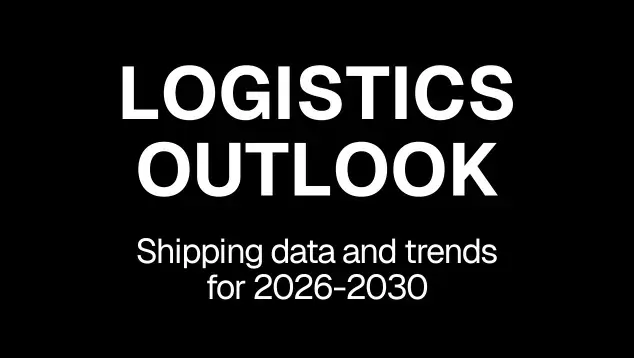Microfulfillment & Logistics: what is it, advantages for retail in 2025
 By
Giulia Castagna
·
3 minute read
By
Giulia Castagna
·
3 minute read
 The microfulfillment market is experiencing extraordinary growth, driven by digital transformation and increasingly stringent demands from digital consumers. Globally, the sector is expected to reach €30.15 billion by 2030, with an annual growth rate of 31.1%.
The microfulfillment market is experiencing extraordinary growth, driven by digital transformation and increasingly stringent demands from digital consumers. Globally, the sector is expected to reach €30.15 billion by 2030, with an annual growth rate of 31.1%.
In the UK as well, retailers and logistics companies are rapidly adopting these solutions to effectively respond to new market challenges.
The spread of Microfulfillment Centres
The surge in the e-commerce sector (now in a stabilisation phase) has led to an increase in delivery services, significantly raising the volume of parcels shipped. Customers are demanding ever-faster deliveries, leading to the creation of services such as same-day delivery and next-day delivery, which allow shipping within the same day or in less than 24 hours.
To accelerate deliveries, couriers and companies had to adapt their distribution networks, and this is where the microfulfillment phenomenon was born.
Microfulfillment centres are compact, automated logistics facilities (ranging between 3,000 and 10,000 square metres), strategically located in densely populated urban areas to optimise last-mile delivery. By integrating advanced technologies, these centres reduce operational costs by up to 75% compared to traditional warehouses and effectively manage up to 15,000 different SKUs.
Advanced automation and technology: the pillars of Microfulfillment
Microfulfillment centres leverage cutting-edge technologies that form the operational core of these facilities. Among the solutions adopted are automated storage and retrieval systems (AS/RS), which maximise usable space through vertical shelving and narrow aisles, enhancing space management efficiency.
Additionally, autonomous mobile robots (AMRs) navigate seamlessly within warehouses, ensuring speed and precision in picking, reducing human error margins, and shortening order fulfilment times. These robots are equipped with technologies that allow them to dynamically adapt to obstacles and warehouse layout changes.
Integrated management software powered by artificial intelligence (AI) also plays a crucial role. These systems use predictive algorithms to analyse historical and real-time data, enabling accurate demand forecasting, continuous stock optimisation, and reduced machine downtime.
Thanks to these combined technologies, microfulfillment centres can:
- Manage complex inventories with up to 15,000 different SKUs
- Operate in environments with varying temperature requirements (from ambient to refrigerated)
- Significantly speed up order processing, with reductions of up to 50% compared to traditional methods
- Ensure greater accuracy in stock management and logistics operations, contributing to an overall improved customer experience.
7 benefits of Microfulfillment
1. Reduced delivery times
One of the main benefits of microfulfillment is the ability to drastically reduce delivery times. Thanks to their strategic location, often in urban areas or near major population centres, MFCs enable orders to be processed faster than traditional centralised warehouses. This allows businesses to offer services such as same-day delivery or in-store pickup, enhancing customer satisfaction.
2. Optimisation of shipping costs
By positioning products closer to end consumers, microfulfillment reduces transportation and distribution costs. With fewer kilometres to travel, shipping expenses decrease, and CO2 emissions are reduced, contributing to environmental sustainability. Additionally, automation in MFCs helps lower operational costs, improving profitability.
3. Increased operational efficiency
Microfulfillment centres are often equipped with advanced technologies such as robotics, artificial intelligence, and automated picking and packing systems. This reduces human errors, increases order processing speed, and optimises the use of available space. The combination of these factors allows businesses to handle a higher volume of orders with greater precision and fewer wasted resources.
4. Flexibility and scalability
Microfulfillment is a highly scalable solution adaptable to businesses of various sizes. Companies can implement small distribution centres in different locations, gradually expanding their logistics network without the need for immediate investment in large centralised facilities. This flexibility is particularly beneficial for growing businesses or those looking to test new markets.
5. Improved customer experience
By reducing waiting times and ensuring greater delivery accuracy, microfulfillment significantly enhances the customer experience. Today’s consumers expect fast and reliable shipping, and brands that adopt microfulfillment strategies can differentiate themselves from competitors by offering a superior service.
6. Support for omnichannel strategies
Microfulfillment centres facilitate the integration between online and offline sales channels. For example, retailers can use MFCs to support options such as click & collect, same-day delivery, or more efficient returns management. This omnichannel approach not only improves customer experience but also optimises inventory management and stock distribution.
7. Environmental sustainability
Microfulfillment significantly contributes to environmental sustainability. By reducing the distance between distribution centres and customers, deliveries can be made using electric vehicles, thereby cutting CO2 emissions related to freight transport. Additionally, automation and space optimisation in MFCs reduce packaging waste and improve energy efficiency. Some microfulfillment centres also utilise renewable energy sources and adopt eco-friendly practices to minimise overall environmental impact.
Cost-benefit analysis of microfulfillment
Implementing a microfulfillment centre requires a careful evaluation of financial aspects. Likewise, a detailed understanding of costs and benefits is essential for making informed strategic decisions.
Initial investment requirements
Setting up a microfulfillment centre involves a significant initial investment, including several essential components:
- Advanced automation and robotics technologies
- Transport systems and warehouse management software
- Acquisition and adaptation of urban properties
- Training of qualified personnel
Although these initial costs may seem high, particularly for smaller retailers, the overall investment is considerably lower than opening a large automated distribution centre.
Microfulfillment Logistics: the future of urban logistics?
Microfulfillment centres are redefining the future of retail logistics. Specifically, these centres demonstrate their effectiveness through reduced operational costs, drastically improved delivery times, and even a positive impact on CO2 emissions.
With implementation challenges, from urban space limitations to specialised personnel training, requiring targeted solutions, microfulfillment is emerging as a key solution to:
- Significantly reduce logistics costs
- Improve last-mile delivery efficiency
- Optimise inventory management
- Meet the growing expectations of digital customers
As the sector continues to evolve towards 2025, microfulfillment centres represent a strategic choice for remaining competitive in the rapidly transforming retail market.

Curious by nature, analytical by mindset, Giulia Castagna is the voice behind ShippyPro’s content. As Content Marketing Manager, she simplifies complex logistics topics for those who ship around the world every day. She writes about AI, automation, and shipping trends to inspire data-driven decisions.













